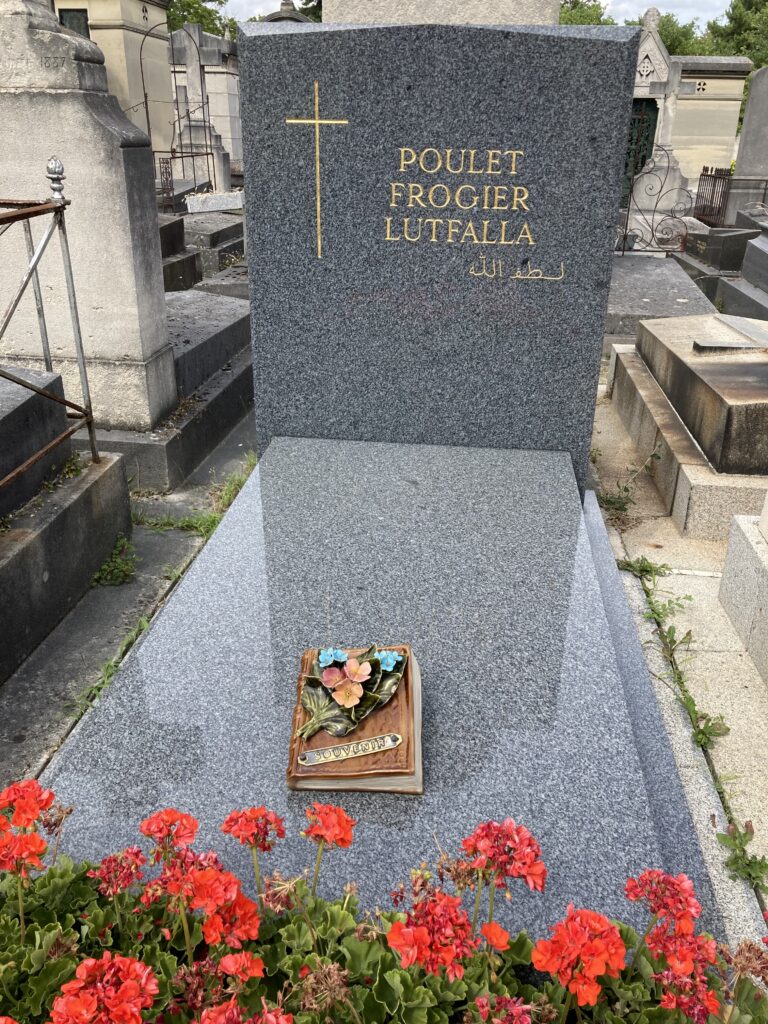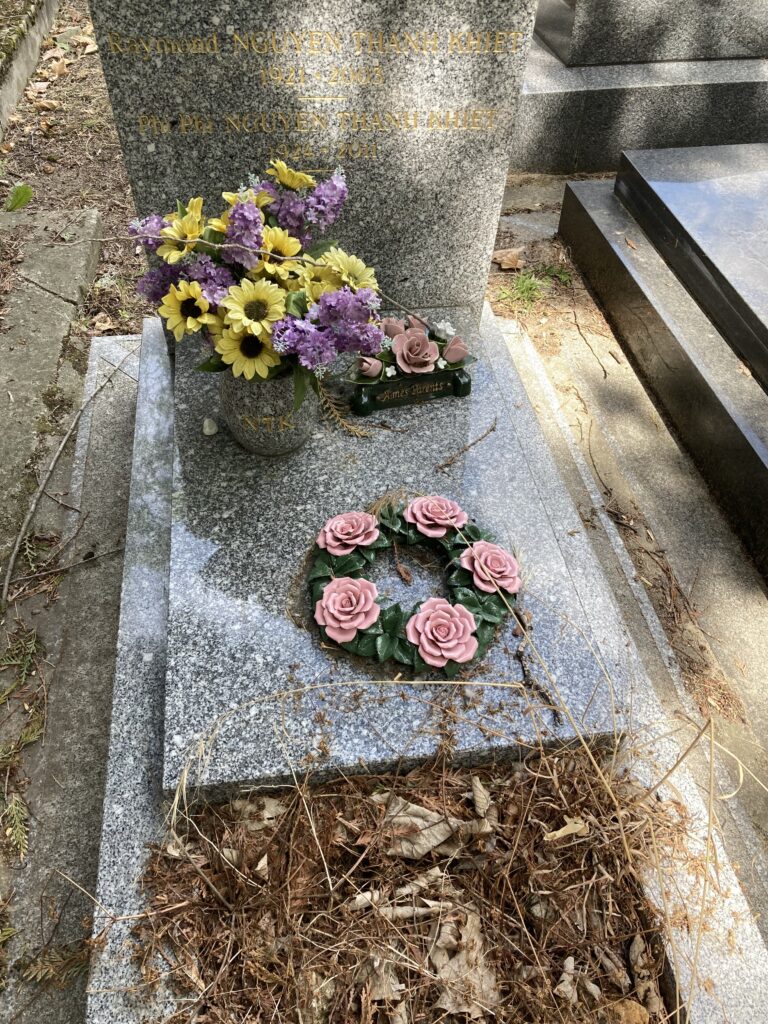Class this week honestly was pretty themed around looking at the way the dead were/are handled in France, so I decided to center my second blog for the week around those class activities! This is pretty fun given that I have taken Graves and Burial Grounds. 🙂
Pere Lachaise
Once again, pretend the proper accents are used when I spell French words. Looking back at my Grave and Burial Ground notes, Pere Lachaise was discussed quite a bit, and for a good reason. It is a great cemetery and, as Smith mentioned, the blueprint for picturesque cemeteries in the U.S.
I can totally see why it was the blueprint. While walking through the cemetery I felt a sense of separation from the cityscape. I can see why people used to picnic in cemeteries and enjoy them as an escape from the city, at least in the U.S.
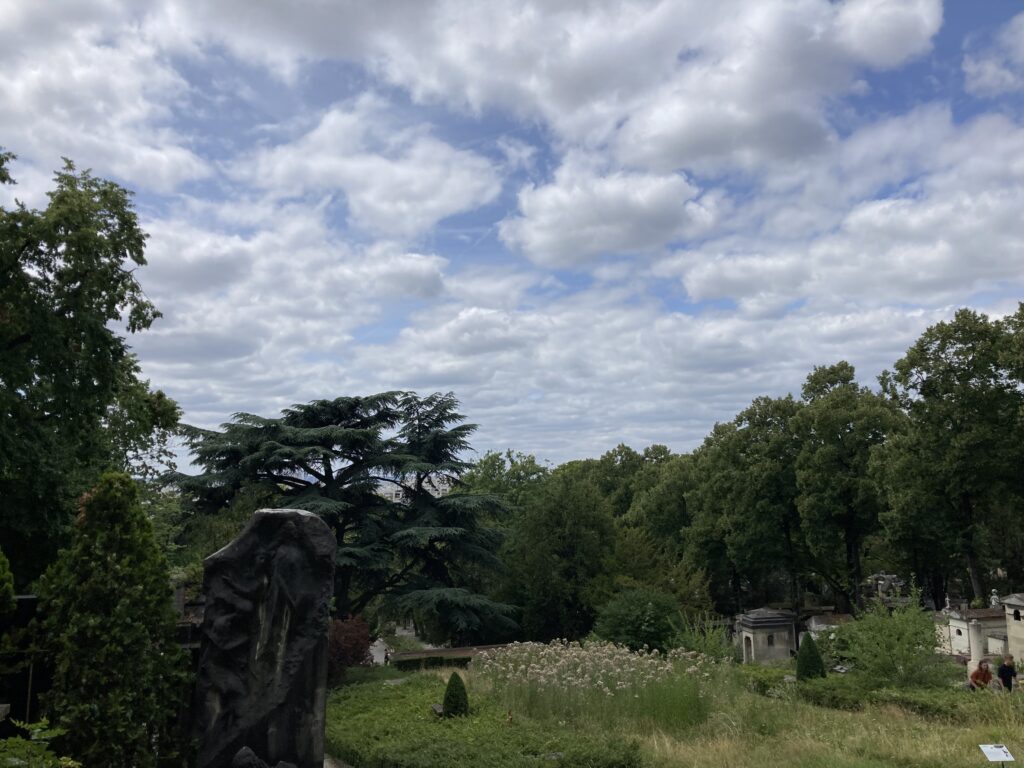
One thing I wish I can remembered during the class visit is that the French Romeo and Juliet (Abelard and Heloise) are buried there and we could have seen them in all their fame. While I know the story between them is actually pretty messed up, it still would have been cool to see and I wish I had remembered this fact. I also find it interesting how they were moved to the Pere Lachaise to promote people getting buried there, that’s quite an advertisement campaign.
The crematorium was also stunning architecturally. As someone who wants to be cremated, I am always interested in how crematoriums are designed. For instance, there are some in the U.S. that just makes me really sad to look at in their blandness. I love how grand the Pere Lachaise’s crematorium is. I feel like it just says “Look at all these people we’re honoring by looking so beautiful.” And the freedom of expression with the tiles for each space is beautiful and shows so much personality.
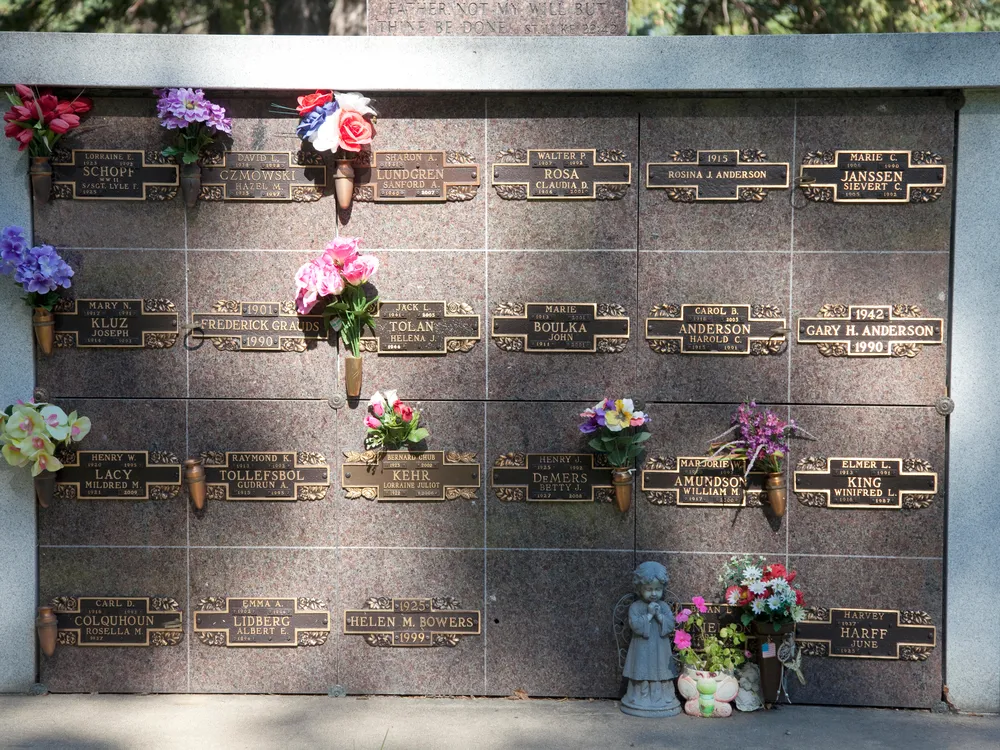
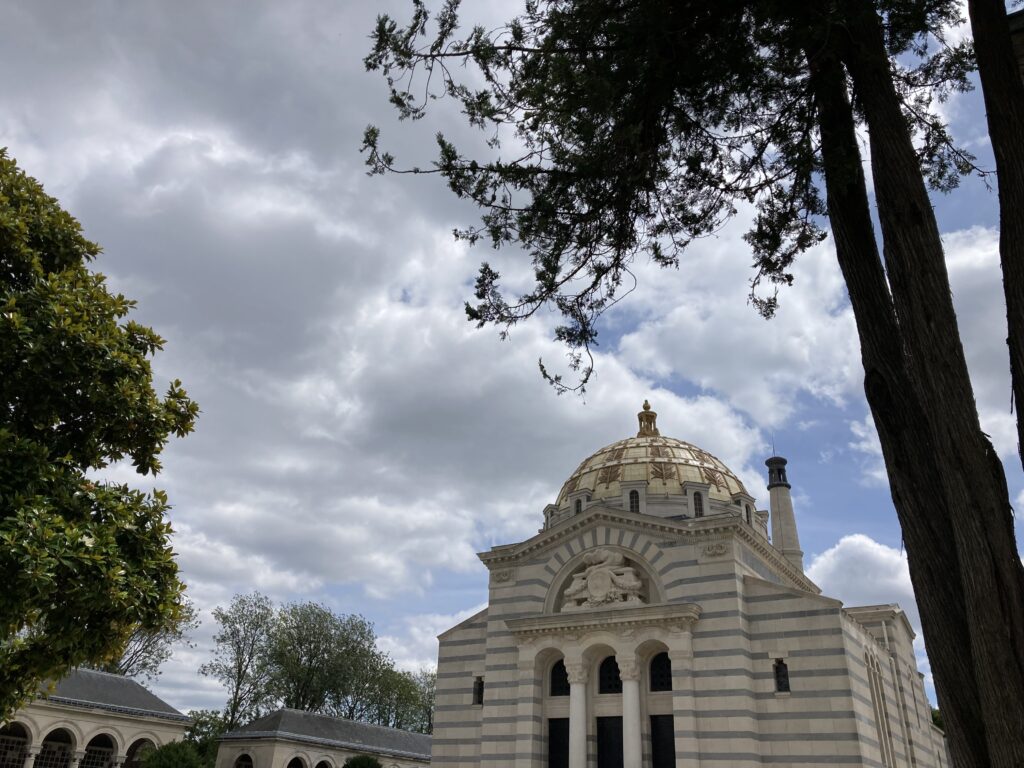
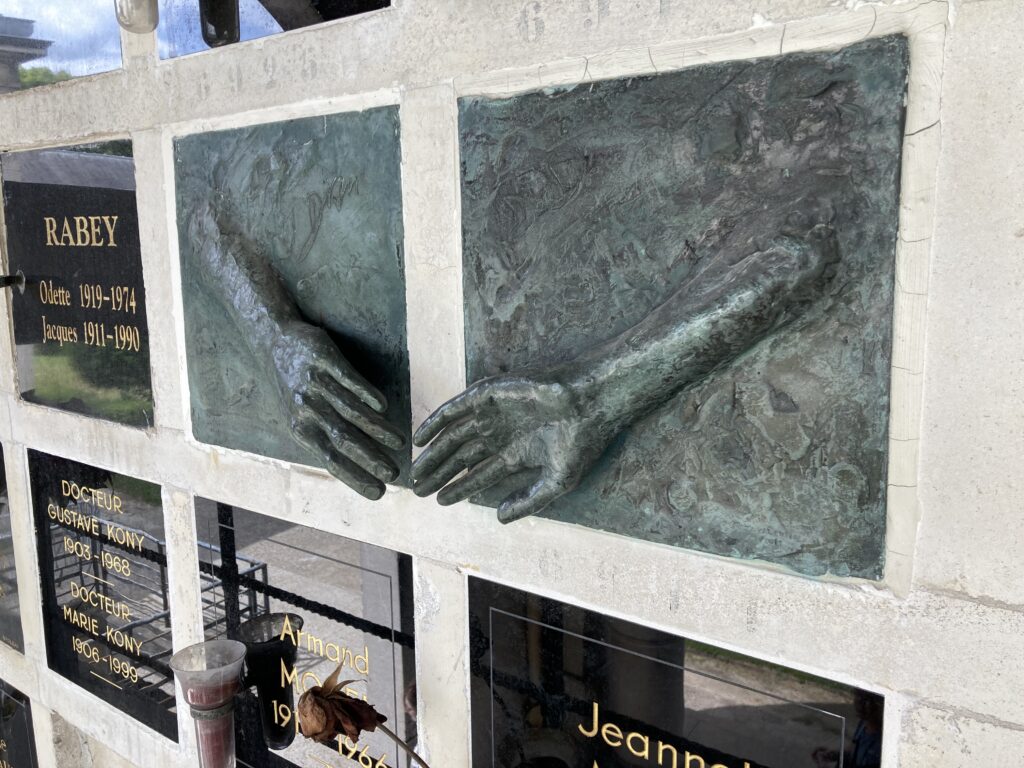
Also, while scrolling the Wikipedia page, I read through the list of media Pere Lachaise appears in, and in The Witcher 3: Wild Hunt expansion there’s a cemetery that takes inspiration after the Pere Lachaise. I need to finish the game to warrant getting that expansion and seeing this virtual cemetery, I am so curious.
Catacombs
I love how the Catacombs were just built as a tourist attraction. Just straight up, “People are going to get a kick out of seeing these bones.”
The Catacombs were honestly a pretty brilliant idea though, since they solved some of the health hazard issues of overfilled cemeteries, and gave cemeteries more space to work with. They were definitely not what I was coming expecting though. I think I had some preconceived notion that bones were just on every inch of the quarry walls and in elaborate designs throughout.
While there were some designs throughout, especially simple ones like skulls facing outwards in lines, it was different than what I originally expected. It was an awesome experience though. I wish that there was more information about who’s bones are down there, but I know they were transported from unmarked graves. It’s sad knowing the memories of these people are lost within piles and piles of bones, but I guess you can look at the fact they are never fully forgotten since people from all over come to visit the Catacombs.
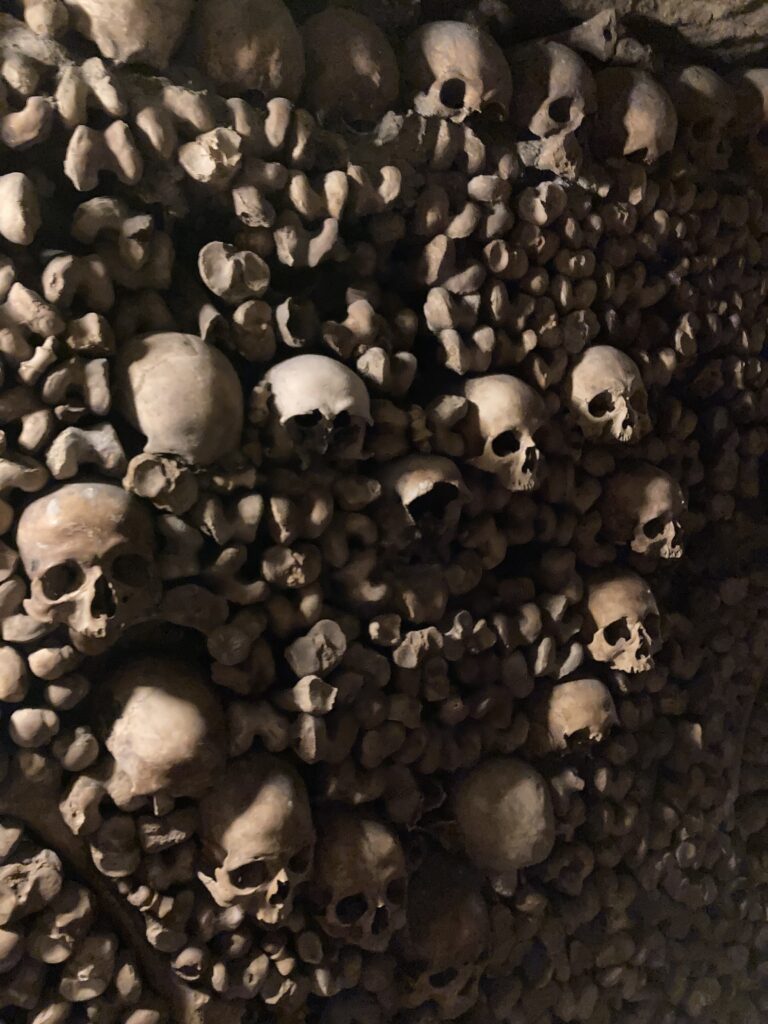
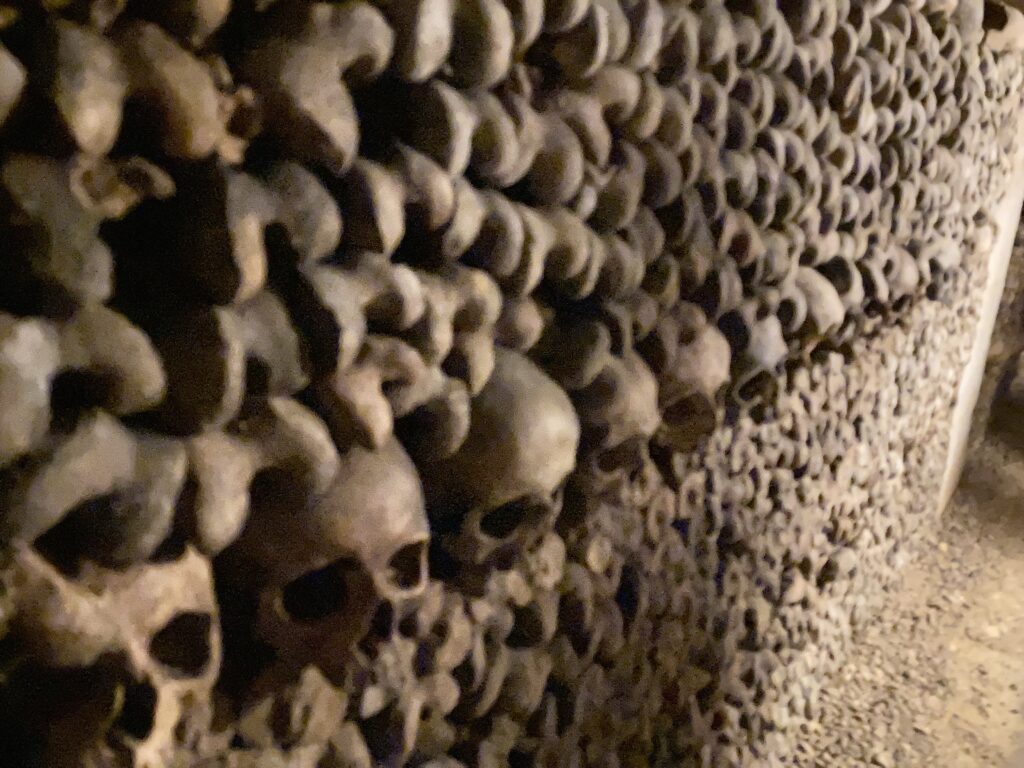
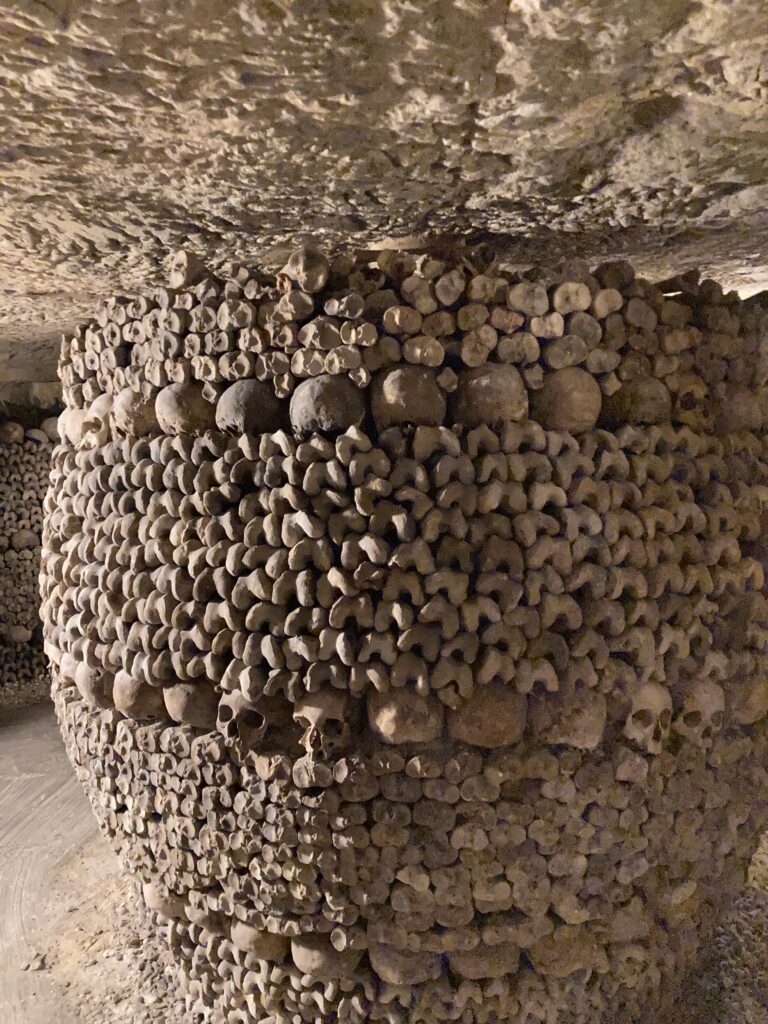
Montparnasse Cemetery
Last is Montparnasse, which technically wasn’t a “class” visit, but rather a casual visit with a majority of the class. It arguably had some of the coolest gravestones I have ever seen, including the famous Boob Fish. After learning about Boob Fish through Graves and Burial Grounds, I felt like I was meeting an inanimate celebrity of sorts. There were also so many beautiful mosaiced gravestones and metal sculptures. My personal favorite is the one that reminded me of The Cathedral by Rodin.
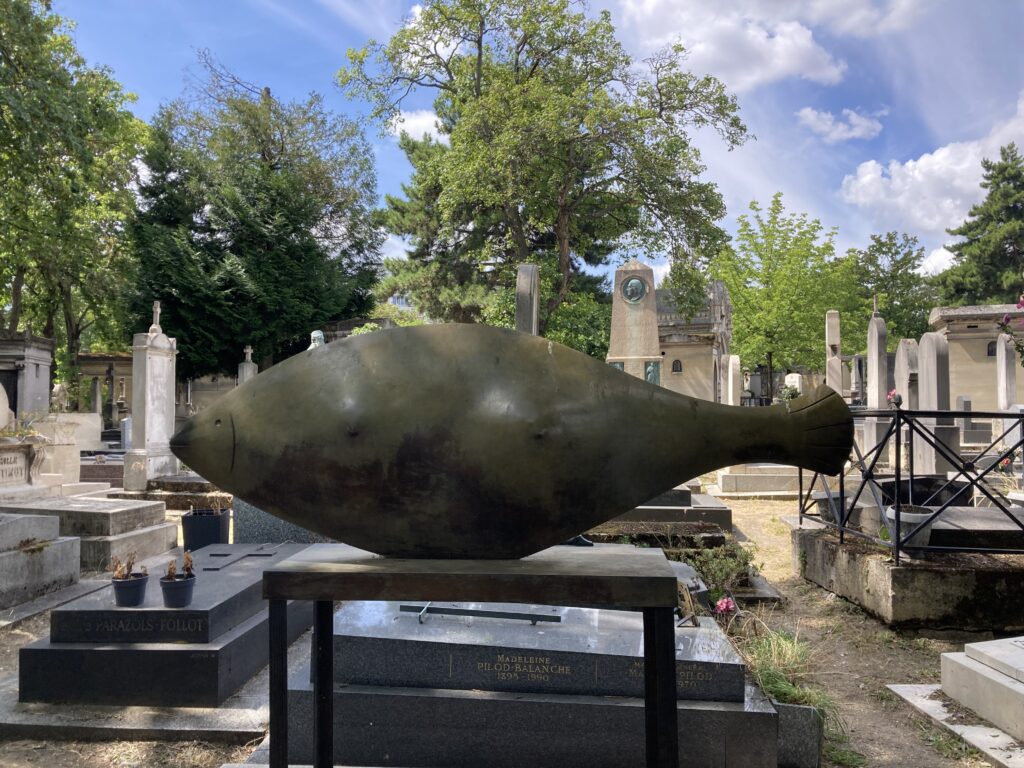
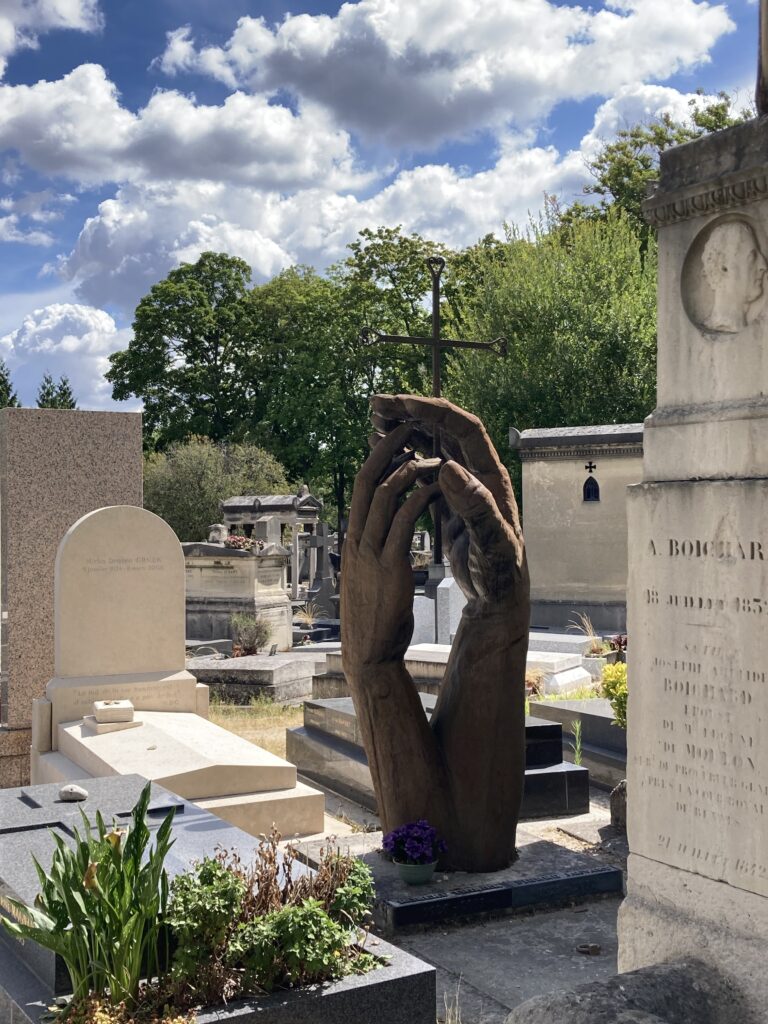
I think Montparnasse was honestly my favorite out of the cemeteries we’ve visited here. This is mainly due to coming back to Montparnasse later on in the day by myself and just taking everything in. Being alone in that space was honestly very calming and kind of comforting in a weird way. I just felt at peace with how these families and individuals are still honored by their descendants and how some show their personality even in death with how their gravemarker has been designed.
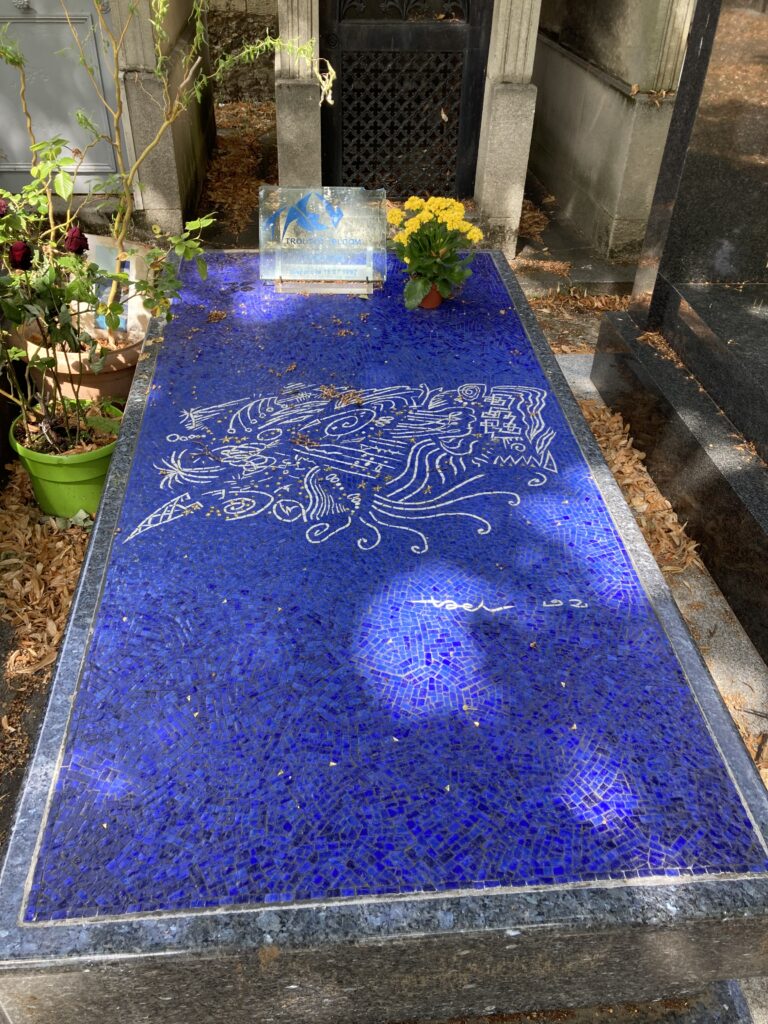
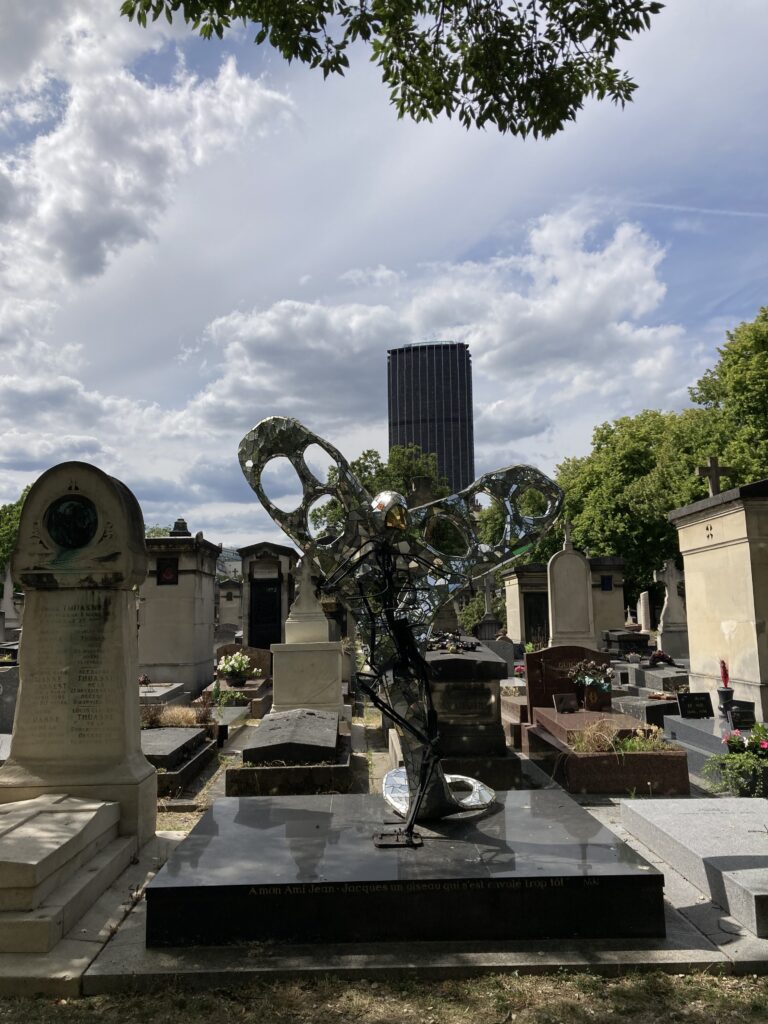
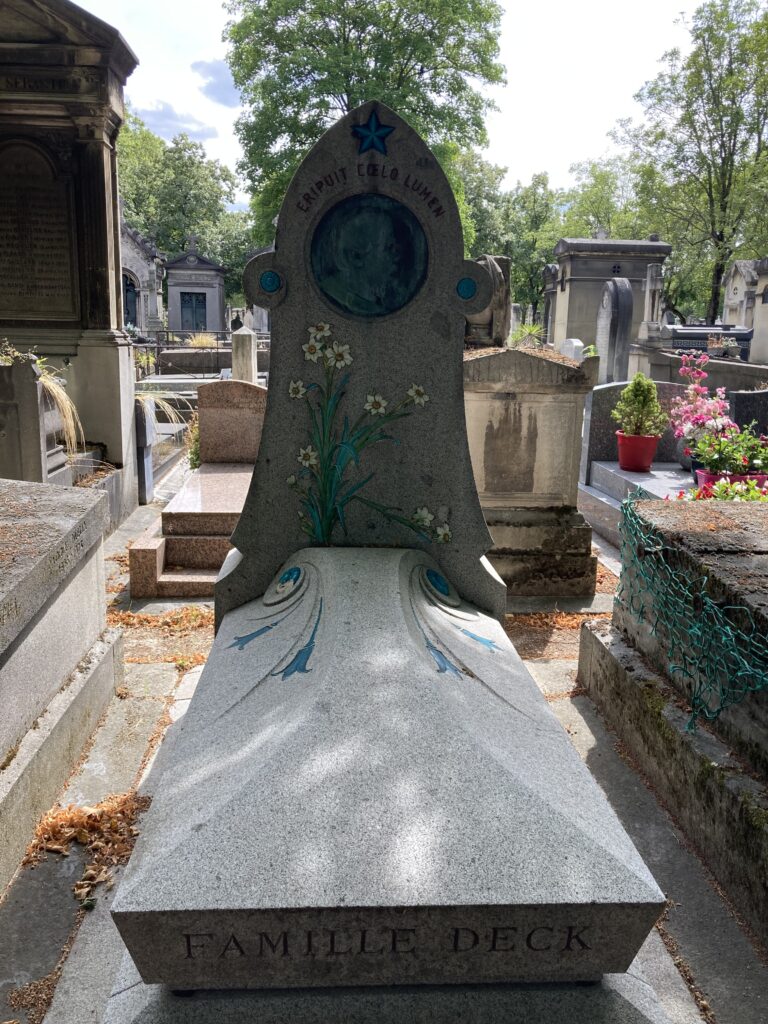
This is less about Montparnasse and more about remembrance now, but I noticed that a lot of the gravestones had ceramic flower wreaths. Well, I looked it up and found out that this practice actually has a name. Immortelle, which means everlasting in French, is mainly a practice done in Western Europe, but mainly in France. This already makes so much sense, because I don’t recall seeing anything like this in the cemeteries back in the States. [1]
Immortelles range from preserved flowers in wired domes to wire-strung beads. [2] However, what seems to be the most popular today, based on my own observation are ceramic flower wreaths. I just adore the concept because it’s a way to honor the dead with flowers that will withstand the test of time (given that no one messed with them). I know plastic flowers are an option too, but they get pretty rough looking after a while, and plastic is never a great option. Whereas these ceramic flowers could just use a good rinsing, and I think they would look good as new.
